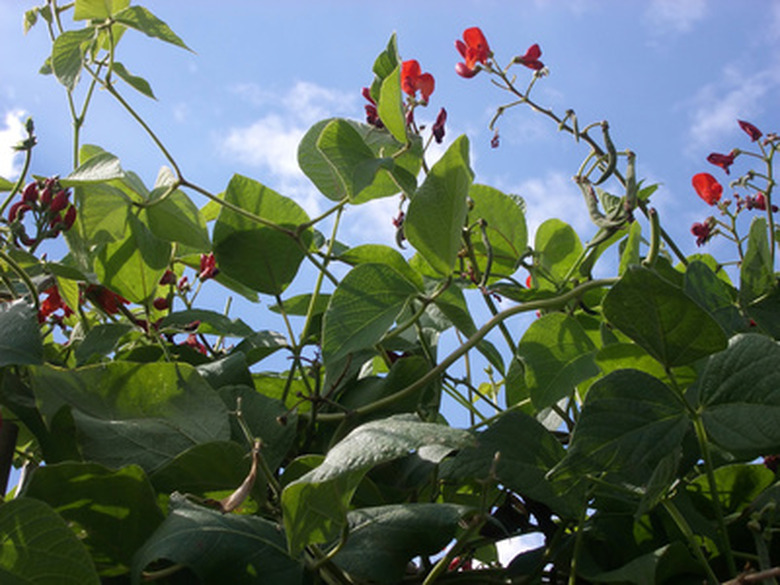The Effect Of Light Intensity On Bean Plants
Light is an important factor in the growth of bean plants. Light deficiency can lead to stunted plant growth and increase the growth of mold or fungus. Protecting seedlings by using indoor containers before transplanting to areas of high sunlight is a great way to give the plant adequate levels of light to thrive.
Light
To grow properly, bean plants need 10 to 12 weeks of full direct sunlight prior to being harvested. Sunlight is a major source of light intensity and can provide the plant with necessary minerals for growth. Gardeners may also use artificial light and green houses to give the plant the sunlight it needs for proper development.
Light Deficiency
Growing plants indoors often leads to insufficient light for the plant. Beans that do not receive full sunlight will become inhibited in growth and show signs of starvation due to lack of photosynthesis that will take place. Growth will slow to a noticeable point and the germination process for younger place will be stalled.
- Light is an important factor in the growth of bean plants.
- Protecting seedlings by using indoor containers before transplanting to areas of high sunlight is a great way to give the plant adequate levels of light to thrive.
Warning
Gardeners should take not of which areas receive the most sunlight before planting or transplanting bean plants. Plants will need time to develop the proper roots to maintain their growth. Get rid of potential pests such as aphids and fungal diseases with pesticide before planting them. Follow all package directions before attempting to grow bean plants.
Considerations
To allow for proper sunlight, plant seeds or seedlings about an inch apart from one another. This will limit the amount of shade given off as the plant begins to grow. They require moist soil and are most susceptible to disease and death while still young. Various species of bean will require different care needs, and it is important to play close attention to the amount of light the plants are receiving.
- Gardeners should take not of which areas receive the most sunlight before planting or transplanting bean plants.
Solution
It is easy to correct many of the issues that present themselves due to insufficient light, such as cold spots and mold. The first, obvious solution is to increase the amount of light. Place boxes in front of a window during the sunnier parts of the day while the seedings are maturing. Another solution is to use artificial lights specifically made for gardening during the times of the day when there is a limit in light. This can be done both during the day and at night.
References
- University of Missouri: Extension: Lighting Indoor Houseplants
- "Home Vegetable Gardening: A Complete and Practical Guide to the Planting and Care of All Vegetables, Fruits and Berries Worth Growing for Home Use"; Frederick Frye Rockwell; 2008
